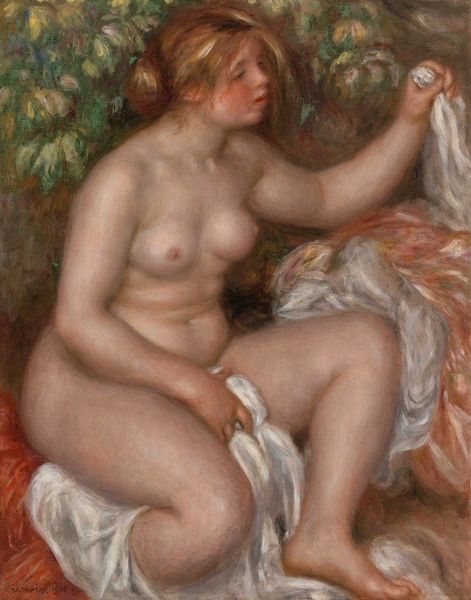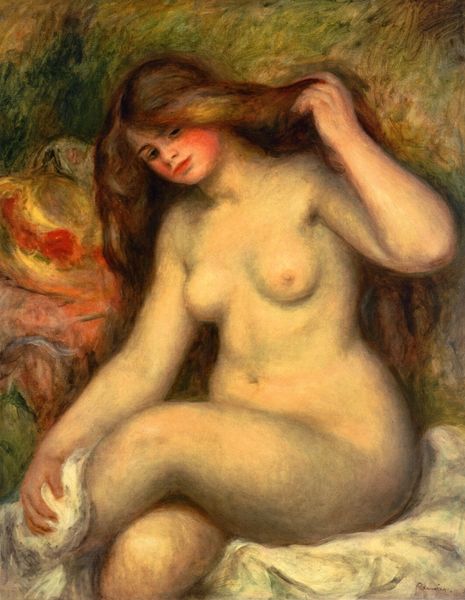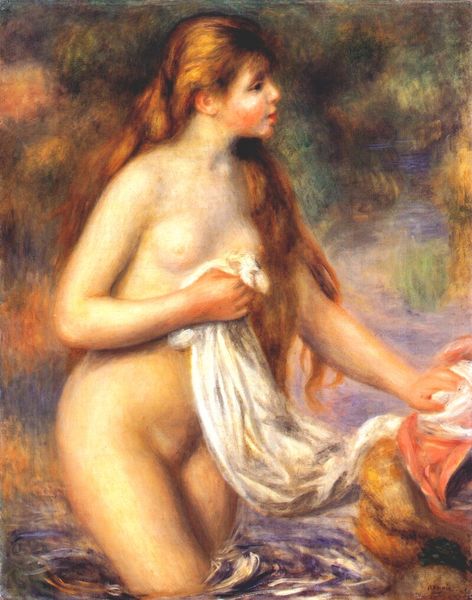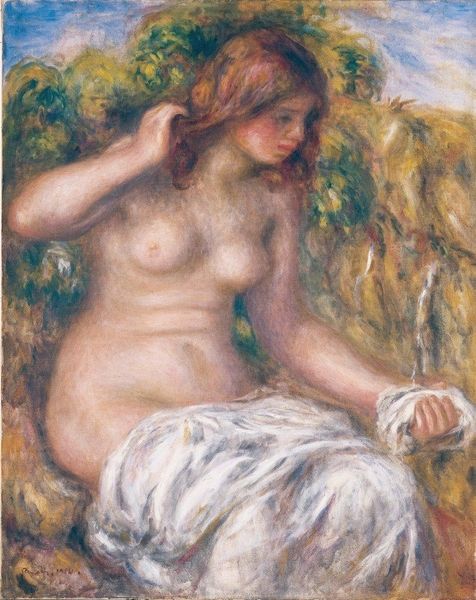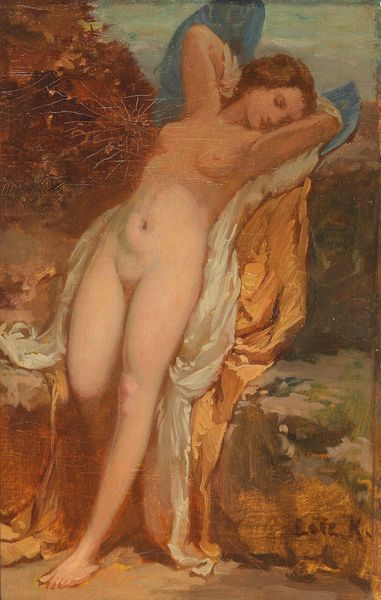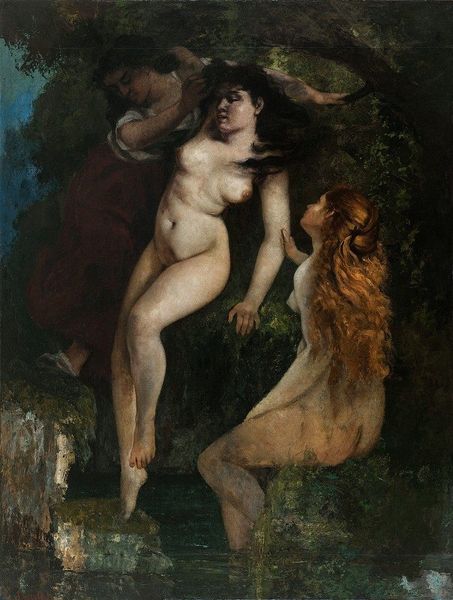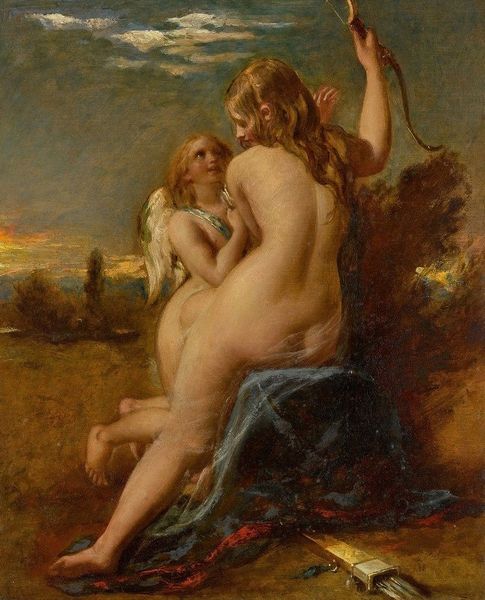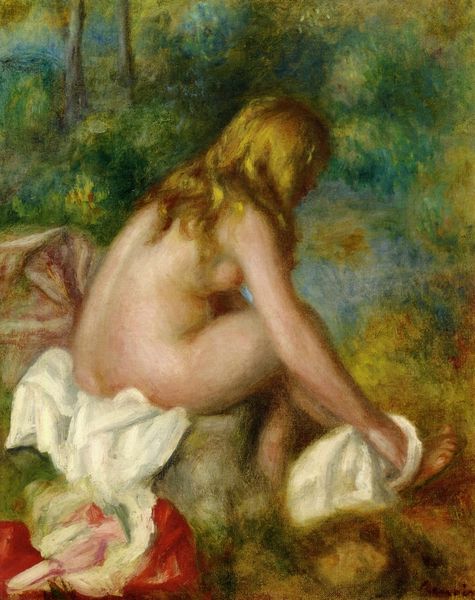
Copyright: Public Domain: Artvee
Editor: So this is Renoir's "Seated Bather," painted sometime between 1903 and 1906, done with oil paints. I find the coloring to be pretty interesting with its kind of subdued shades, creating a dreamy almost idealized vision. What do you see in this work? Curator: I see echoes of Venus, wouldn’t you agree? Think about her across centuries of art history—this figure resonates with that enduring symbol of feminine beauty and fertility. The flowing red hair especially – does it not remind you of Botticelli's Venus, or perhaps even mythic mermaids luring sailors? Editor: Yeah, I do see the connection. The long hair gives her this almost unreal kind of ethereal quality that kind of blends in with the sort of romanticised landscape background. I guess that is meant to create that symbol of feminity by almost objectifying that figure by removing them away from their actual humanity? Curator: Objectification is a modern lens, a valid one, but also consider how Renoir uses color. Those muted, earthy tones… how do they inform our perception of the female form? Does it ground her in the physical world or elevate her to a symbolic realm? Editor: I think it might be both. By muting the colors, she is not exactly blended with the earth but that creates the more romantic vibe for her figure while at the same time we recognize that it still might represent the image that the earth is feminine, maternal, and bountiful. Curator: Precisely! Think of the color red symbolizing passion or maybe even blood and life in different cultures or in religion and mythology. Those color associations connect her back through time, almost making this nude a stand-in for womanhood itself. That invites interpretations on multiple levels of time, belief and memory. Editor: That is super cool! So, it is really about these complex interpretations from the past of the nude to try and interpret today about all the potential and possible symbols this piece brings us? Curator: Exactly, art often builds upon the collective visual language of humanity, reinterpreting familiar symbols and archetypes for new audiences and new ideas.
Comments
No comments
Be the first to comment and join the conversation on the ultimate creative platform.

